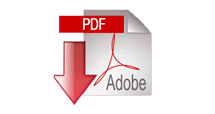If you have managed to get this far then you should have written your query letter and constructed your synopsis. The third and final part of the book proposal is the extract.
The whole point of your book proposal has been to push the agent and publisher to the point at which they are willing to read your extract. Your query letter and synopsis will have demonstrated that you represent a real ‘commercial’ opportunity, however it will all be for nothing if your extract is not up to scratch.
You Only Have to be Good Enough
In his book Outliers, Malcolm Gladwell examines the roll of intelligence and ability in the success of any given project. In essence, his findings are simple. Gladwell concludes that as long as the individual met a certain ‘standard’ in their chosen field, then success was dependent on other factors. In other words, as long as your writing ability and technical ability are ‘good enough’ then it will be other factors that decide on the success of your book. However, if your writing is not up to the required level, then rejection will follow. This means that writing Shakespearian-standard prose will not bring certain success, but a mistake-riddled manuscript with poor narrative is bound for rejection.
This means that it is your duty as a writer to ensure that your extract is the best it can possibly be at the time of submission. No agent or publisher is expecting a manuscript to land on their desk print-ready. Editors are aware that all books need work prior to publication. Every novel will be copy-edited at least once and will also receive a close proofread. However, agents and publishers are cost sensitive and they are looking for manuscripts that need as little work as possible. Gone are the days when an agent or publisher would spend years nurturing a writer; today they are looking for a fast turnaround.
The long and short is that no matter how well written your book proposal, if your extract is not ‘good enough’ it will be rejected.
The Structure of Your Extract
Agents and publishers can be difficult beasts at times and each will have their own ideas on what your book proposal should look like. I would insist that before sending an extract to a publisher or agent that you read their submission guidelines carefully. However, as a general rule of thumb your extract should be:
- A sensible font in 10 or 12 point (I would suggest Arial or Times New Roman)
- Double spaced
- Three chapters or fifty pages (double spaced)
- The first chapters in your book
These rules are always over ruled by a specific agent or publisher’s own guidelines.
Ensuring that your extract is the opening of the book has two distinct advantages. The first is that the first 50 pages of your novel should contain your inciting incident. This is the event that causes the protagonist to react and sets up the narrative arc. The second is that including non-sequential chapters just raises too many questions. The agent will wonder why you haven’t given them sequential chapters, perhaps even worrying that you are trying to hide a slow or clumsy opening. A third bonus reason is that the opening section of your book is arguably the most important. If you can’t hook an agent or publisher with this extract, what hope do you have with your reader?
In the remaining lessons we will look at ways to ensure your book is the best it can possibly be at the time of submission.


